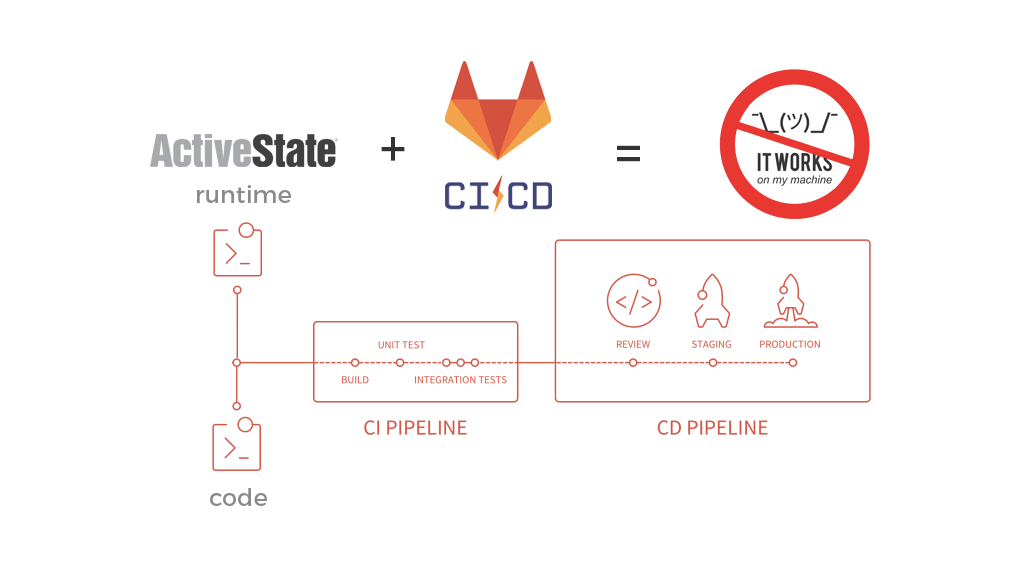Molecule output will use ANSI colors if stdout is an interactive TTY andTERM value seems to support it. You can define PY_COLORS=1 to forceuse of ANSI colors, which can be handly for some CI systems.
Jun 04, 2020 Scripts in the test: section of gitlab-ci.yml for linting and testing are just the regular commands you would use in Python. For more information on configuring pipelines and using advanced features in your scripts, please refer to GitLab’s Pipeline documentation. This script can be considered the main function of the extract, and is the file which gets run as the starting point of the extract DAG. When not to use Python Since this style guide is for the entire data team, it is important to remember that there is a time and place for using Python and it is usually outside of the data modeling phase. Automate python jobs by GitLab CI. Automating python scripts to run by GitLab CI (Runner) needs to configure with '.gitlab-ci.yml' with multiple parts like image, stage, only, manage environments and settings on GitLab. This blog specifies how to automate python scripts to run by GitLab CI. In the following, I will talk about each element of. The.python:build job template provides an end-to-end distribution build configuration, effectively running the following command to build a project: python -m build -sdist -wheel. The outputs are uploaded as job artifacts. The following variables can be used to configure the build.
GitHub Actions
GitHub Actions runs a CI pipeline,much like any others, that’s built into GitHub.
An action to clone a repo as molecule_demo,and run moleculetest in ubuntu.
If you need access to requirements in private repositories, create a tokenwith the required privileges, then define a GIT_CREDENTIALS secret foryour repository with a value looking like https://username:token@github.com/,and finally add the following step before Test with molecule
Travis CI
Travis is a CI platform, which can be used to test Ansible roles.

A .travis.yml testing a role named foo1 with the Docker driver.
A .travis.yml using Tox as described below.
Gitlab CI
Gitlab includes its own CI. Pipelines are usually defined in a .gitlab-ci.yml file in the top folder of a repository, to be run on Gitlab Runners.
Here is an example using Docker in Docker
GitLab Runner is used to run your jobs and send the results back to GitLab.By tagging a Runner for the types of jobs it can handle,you can make sure shared Runners will only run the jobs they are equipped to run.
Here is another example using Docker, virtualenv and tags on Centos 7.
Azure Pipelines
Azure Pipelines projects rely on the azure-pipelines.yml file within the root folder of a repository. There are a number of pre-requisites for running CI/CD within Azure on self-hosted runners if you intend on using the UsePythonVersion task. Details of this can be found in the Use Python Version Task documentation.
Whilst the pipeline checks out your code initially as part of the pipeline task, by default, it checks it out into a directory named s within $(Agent.BuildDirectory). If you checkout one other repository, the s is substituted with the path provided in that checkout. If you checkout multiple roles (e.g. some private roles within your Azure organisation) then the s structure is used, hence the importance of the cd$(Agent.BuildDirectory)/role-name which ensures you are in the correct directory regardless of format. Check the Azure Build Variables documentation for more detailed information on these.

The exportPATH is required to ensure you can use the molecule/ansible shell scripts. Azure doesn’t add these by default.
Jenkins Pipeline

Jenkins projects can also be defined in a file, by default named Jenkinsfile in the top folder of a repository. Two syntax are available, Declarative and Scripted. Here is an example using the declarative syntax, setting up a virtualenv and testing an Ansible role via Molecule.
Building A CI/CD Pipeline
The following Jenkinsfile uses the Toolset image.
Note
For Jenkins to work properly using a Multibranch Pipeline or a GitHub Organisation - as used by Blue Ocean, therole name in the scenario converge.yml should be changed to perform a lookup of the role root directory. For example :
This is the cleaner of the current choices. See issue1567_comment for additional detail.
Gitlab Ci Python Example

Tox
Tox is a generic virtualenv management, and test command line tool. Toxcan be used in conjunction with Factors and Molecule, to perform scenariotests.
To test the role against multiple versions of Ansible.
To view the factor generated tox environments run tox -l.
If using the –parallel functionality of Tox (version 3.7 onwards), Moleculemust be made aware of the parallel testing by setting aMOLECULE_EPHEMERAL_DIRECTORY environment variable per environment. In addition,we export a TOX_ENVNAME environment variable, it’s the name of our tox env.
You also must include the TOX_ENVNAME variable in name of each platform inmolecule.yml configuration file. This way, their names won’t create anyconflict.